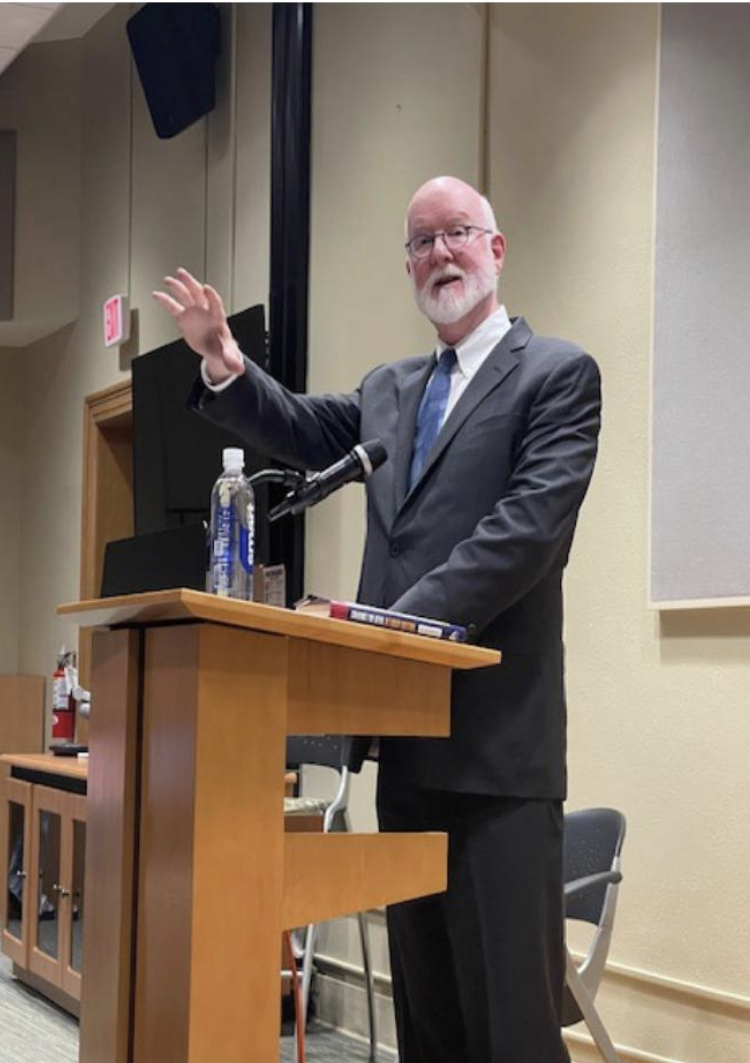Let’s talk about tipping. For the purpose of this discussion, let us suppose that a waiter or waitress works at a restaurant where individual meal orders average $12.75.
If each customer provided a 20 percent tip, the waitperson would earn roughly $2.55 in tips on each individual meal order. For a table of four, the total tip would be $10.20.
Let us imagine that the average waitperson served six tables ($61.20) an hour for eight hours a shift ($489.60). If this non-existent, fairytale waitperson were to work five days per week, he or she could earn $2,448 per week. If this waiter were to work fifty weeks of the year, the grand total would be $122,400 per year.
Of course, the majority of waitpersons don’t receive this much in tips — as there are too many variables.
Not every day is a busy Friday or Saturday night, and not every customer brings three other dinner guests along when they go out to eat. Also, not everyone tips in the 15-20 percent range.
According to the Bureau of Labor Statistics, the average waitperson will make $20,710 per year.
The word “tip” is actually an acronym for “to insure promptness.” So, tips are essentially bribes for faster service. Is it necessarily a bad bribe? I wouldn’t say that it is.
My only complaint with the restaurant system is that waitpersons are paid on tip-wage basis that guarantees them a minimum wage of only $2.13 per hour. This wage has not budged since 1991 when the regular minimum wage was $4.25 per hour.
It doesn’t make much sense to me that in 1991 tip wages were 50 percent of minimum wage.
Presently, waitpersons are paid 28 percent of the current minimum wage. In 2014, the Restaurant Opportunities Center found that states that legally require restaurant owners to pay waitpersons higher hourly wages also found higher per capita restaurant sales.
Data from their report showed that when waitpersons are paid a higher wages, they stayed at their jobs longer, their productivity increased and they tended to spend more of their own money at the restaurant.
A frequent argument against raising hourly wages for waitpersons is that customers would grant smaller tips to the better compensated wait staff. I disagree with this point of view.
Within our culture when people receive a service, it is widely considered common courtesy to tip.
Tipping is a voluntary, rather arbitrary custom that is not particularly tied to good service.
Studies have shown that waitpersons receive more tips when they touch a customer’s arm or draw something cute (a sun or smiley face) on the check. Tipping also increases when waitpersons wear red.
Of course, there are customers who do not tip within the current tip-wage system.
Some customers chose not to tip because they want to send a message to their waitperson that their service quality was lacking.
On this point, I agree with the comment of a waiter who was interviewed by Huffpost Business. He remarked, “If you had a bad experience, say something to your waiter, say it to a manager, but don’t say it with your money.” I agree with him.
Not tipping conveys nothing constructive to the waitperson. It only serves to make you, the customer, appear cheap. When you receive a service, tip 15 to 20 percent.
Directly address complaints and compliments regarding your dining experience with the waitperson or manager.
Add them to your tip, but never subtract the tip.
A tip is a gratuity, so be gracious and grateful. After all, you can afford to eat where you are offered table service.














Thomas Marx • Feb 15, 2016 at 3:04 am
Excuse me, I’m not from this place: Why do you have “waitstaff”? Don’t you have “workstaff”?
Benjamin Ridgeway • Feb 16, 2016 at 12:42 am
I used the word, “waitstaff” because I am talking about tipping waiters or waitresses. I saw that you were from Germany when I clicked on your name and saw other comments that you have made in the past. I am assuming that Germany is a country where tips are pooled for the whole workstaff. However in the United States tips go straight to the waiter/waitress and do not reach the kitchen.
Springs131 • Feb 11, 2016 at 11:48 pm
“On this point, I agree with the comment of a waiter who was interviewed by Huffpost Business. He remarked, “If you had a bad experience, say something to your waiter, say it to a manager, but don’t say it with your money.” I agree with him. Not tipping conveys nothing constructive to the waitperson.”
Then how will the worker ***LEARN** from it? Why do you think kids get detentions, workers get reprimanded, people that do crimes go to jail, etc.?? If they had ZERO CONSEQUENCES in life, then the behavior would continue that is unwanted.
If everyone would tip like me and my husband, there would be HUGELY LESS problems in restaurants, because the good servers would have a good tip, the bad ones would have a bad tip or no tip. The bad ones would know they couldn’t pay their bills if they wanted to keep working there.
Taking away the money for horrible service *AND* reporting it to the manager are good ways improving service. You have to do BOTH, because just telling a manager will not improve anything. The worker knowing they can’t pay their bills WILL.
“It only serves to make you, the customer, appear cheap.”
NO, when we tip, it has ZERO to do with cheapness. It has to do with if you are a hard and caring worker. It’s like the customer is the employer telling you the instructions of the job and you are expected to do them correctly as much as you possibly can in a timely fashion with politeness. Not tipping for horrible service has to do with treating people the way they treated you. It has ZERO to do with cheapness. I’d rather give a hard worker 30% or more than to give someone one penny tip that treated us horribly. It’s not about money, believe me.
“A tip is a gratuity, so be gracious and grateful.”
The thing is, these days, servers feel so entitled, they aren’t grateful. I have seen so many servers that complain “Oh they tipped me $10 on a $130 check” rather than being *GRATEFUL* they got MUCH MORE THAN ZERO, because $10 is A LOT. I don’t tip that poorly unless I would get bad service on a check that high, but just to say, it’s almost like they act like they’d rather have ZERO. Well, if that’s the case, you should give the customer their $10 back and you will have to *PAY* to serve them due to the tip out. How’s about that one for ya?? I doubt you would feel ungrateful then when you have to poke out more money than what you made.
A tip is something that is not a legal or moral right, but ********************************EARNED**********************************************! You aren’t entitled to a tip, it’s EARNED!
“Some customers chose not to tip because they want to send a message to their waitperson that their service quality was lacking.”
That is the ***********ENTIRE POINT OF TIPPING**************, DUHHHH! That’s why tipping is at the *END* MORON! Seriously, that’s why we all tip. If it was something that wasn’t by choice, you’d see it on our check and I am not including obviously when you have automatic gratuity in a large party or using a coupon that requires it, because then you already know what you are getting into at the start.
“Studies have shown that waitpersons receive more tips when they touch a customer’s arm or draw something cute (a sun or smiley face) on the check. Tipping also increases when waitpersons wear red.”
Those studies are VERY WRONG. No one wants to be touched unless they know you personally. Drawing things makes me tip less when they have wasted *****MY TIME********* that I want to ********LEAVE********* and/or they have overcharged me. We have had this happen once when a waitress overcharged us, but YET, FOUND TIME TO DOODLE on the check and write “thank you” with their name. Which one was more important? She charged us over $3 for a shot of alcohol that was for another table. She got stiffed. WHY? She didn’t ***CARE*** about OUR MONEY, just about doodling. So that’s the tip she got for PLAYING ON THE JOB rather than DOING HER FREAKIN JOB. Her job is to CHARGE us CORRECTLY. She didn’t care about our money, just hers.
Wearing a certain color people care less about. That’s just BS.
“The word “tip” is actually an acronym for “to insure promptness.””
NO, it stands for “To Insure Proper Service.” That’s what tips stands for. You are dumb!
VAReader • Apr 25, 2016 at 4:53 pm
Wow, someone needs professional help…and it NOT the WAITRESS…LOL